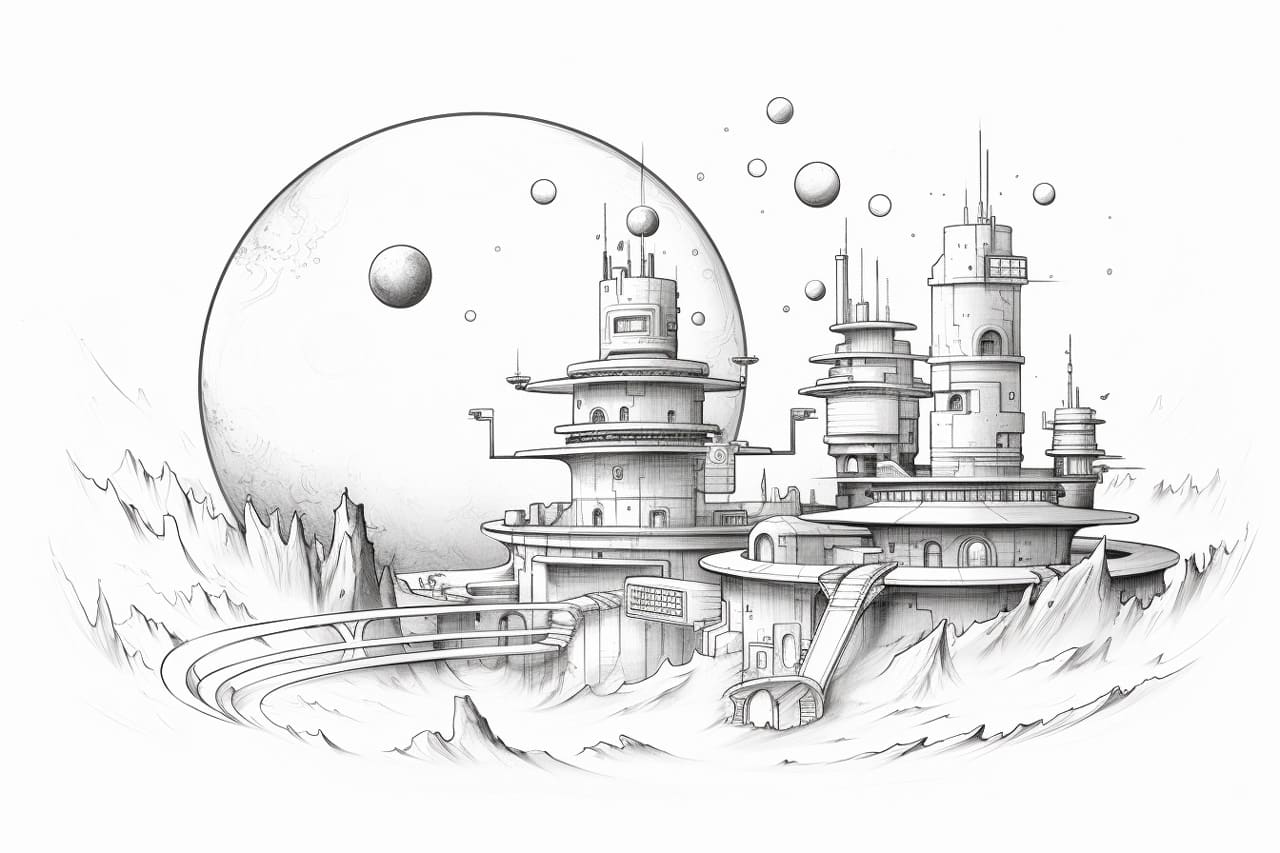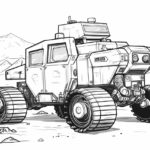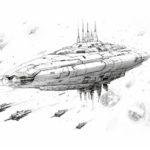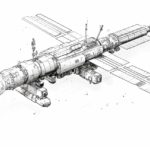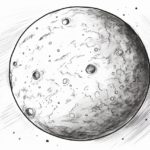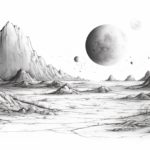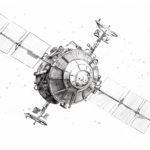Welcome to the exciting world of drawing Space Colony! In this unique and imaginative art form, you can create your own futuristic worlds, envisioning what life may be like in outer space. From towering skyscrapers to advanced technology, from bustling markets to alien landscapes, the possibilities of designing a Space Colony are endless.
This drawing style allows you to unleash your creativity and push the boundaries of your imagination as you explore the mysteries of the cosmos. Whether you are a seasoned artist or just starting, drawing Space Colony offers a captivating journey into the unknown, where you can experiment with different shapes, colors, and structures to bring your vision to life.
Join me as we embark on this artistic adventure together, where we will learn techniques, tips, and tricks to help you master the art of how to draw a Space Colony. Get ready to let your creativity soar to new heights as we delve into the endless possibilities of creating a world beyond our wildest dreams. Let’s blast off.
Materials Required
To draw a Space Colony, you will need the following materials:
- Drawing paper or sketchbook
- Pencils (different hardness for shading and detailing)
- Eraser (preferably a kneaded eraser for clean corrections)
- Ruler (for creating straight lines and perspective)
- Compass (for drawing circles and arcs)
- Colored pencils, markers, or pens (optional for adding color)
- Reference images of space colonies for inspiration and guidance
These materials should be sufficient for creating a detailed and visually appealing drawing of a Space Colony.
How to Draw a Space Colony: a Step-by-step Guide
Step 1: Gather Inspiration and References
Before drawing a space colony, gather inspiration from sci-fi movies, books, and images of futuristic architecture. Look for references to space stations, colonies, and futuristic cityscapes to help you visualize your design.
Step 2: Conceptualize and Sketch the Layout
Begin by sketching the basic layout of your space colony. Decide on the overall shape and size of the colony and the fundamental structures, such as living quarters, recreational areas, laboratories, and docking bays. Use basic shapes like circles, rectangles, and cylinders to outline the various components of the colony.
Step 3: Add Detail to the Structures
Once you have a rough layout, start adding details to the structures within the colony. Consider the function of each building and how it contributes to the overall functionality of the colony. If your colony is mobile, add features like solar panels, communication arrays, and thrusters for propulsion.
Step 4: Create Depth and Dimension
Add shading and highlights to different parts of the structures to give your space colony a sense of depth and dimension. Use darker shades to indicate shadows and lighter shades to show areas catching the light. This will make your colony appear more three-dimensional and realistic.
Step 5: Incorporate Futuristic Elements
To enhance the futuristic look of your space colony, consider incorporating elements like holographic displays, futuristic vehicles, and advanced technology. Add details like glowing lights, geometric patterns, and sleek surfaces to convey a sense of advanced technology and innovation.
Step 6: Add Background and Surroundings
To complete your space colony drawing, add a background that conveys the vastness of space. Include stars, planets, nebulae, or other space elements to give your colony context. Consider adding spacecraft, asteroids, or other objects to make the scene more dynamic and immersive.
Step 7: Refine and Finalize
Take a step back and review your drawing to identify any areas that need refinement or adjustment. Make any necessary changes to improve your space colony’s overall composition and balance. Add any final touches or details to complete your drawing and make it visually appealing.
Step 8: Share and Seek Feedback
Once you are satisfied with your space colony drawing, consider sharing it with others to get feedback and suggestions for improvement. Show your drawing to friends, fellow artists, or online communities to receive constructive criticism and ideas for enhancing your artwork.
Conclusion
Congratulations on completing your drawing of the Space Colony! You have demonstrated great creativity and skill in bringing this futuristic concept to life on paper. Remember that every piece of art reflects your unique perspective and vision. Keep exploring and pushing your boundaries, as endless possibilities are waiting to be discovered in the realm of art. Your dedication and passion are truly inspiring. Keep up the great work, and never stop honing your craft. The sky’s the limit – or the galaxy is the limit! Keep reaching for the stars.
Fun Facts About Space Colonies
- Space colonies could be located on other planets, moons, or in orbit around celestial bodies such as Earth or Mars.
- Some proposed designs for space colonies include rotating habitats that simulate gravity through centrifugal force.
- Space colonies could help facilitate the exploration and exploitation of resources in space, such as mining asteroids or harvesting solar energy.
- The concept of space colonies has existed since the 1970s, with visionary thinkers like Gerard K. O’Neill proposing large-scale habitats capable of supporting thousands of people.
- Space colonies could offer a unique environment for scientific research and experimentation, including studies on human physiology in microgravity.
- Building and maintaining space colonies would require advanced technologies such as life support systems, habitat construction, and propulsion.
- Some concepts for space colonies envision self-sustaining ecosystems that recycle air, water, and waste to create a closed-loop environment.
- Space colonies could provide opportunities for space tourism, allowing people to visit and experience life in space for extended periods.
- The establishment of space colonies could pave the way for the colonization of other planets and humanity’s long-term survival beyond Earth.
- Space colonies represent a bold vision for the future of humanity in space, pushing the boundaries of what is possible and inspiring generations of scientists, engineers, and dreamers.
Suggestions for Scenes and Settings for Space Colony Drawings
- The exterior view of the space colony orbiting a distant planet showcases the colony’s futuristic architecture and advanced technology against the backdrop of space.
- Interior of a bustling spaceport within the colony, with spacecraft coming and going, robots assisting passengers, and various alien species interacting.
- A panoramic view of the agricultural dome within the space colony, where crops are grown under artificial sunlight and gravity conditions.
- A scene inside the research lab of the space colony, with scientists conducting experiments on new technologies or studying alien artifacts.
- A spacewalk outside the colony, with astronauts in their spacesuits repairing a damaged solar panel or conducting a scientific survey of the surrounding space.
- A residential area within the space colony, showing futuristic homes, parks, and recreational facilities where colonists relax and socialize.
- A marketplace within the space colony, with alien vendors selling exotic goods and human colonists shopping for supplies and interacting with different species.
- A futuristic transportation hub within the space colony, with hovercrafts, maglev trains, and flying vehicles transporting colonists to different colony sections.
- A scene inside the control center of the space colony, with operators monitoring the colony’s systems, communications with Earth, and responding to emergencies.
- A panoramic view of the space colony during a meteor shower or other celestial event, highlighting the beauty and fragility of life in space.

